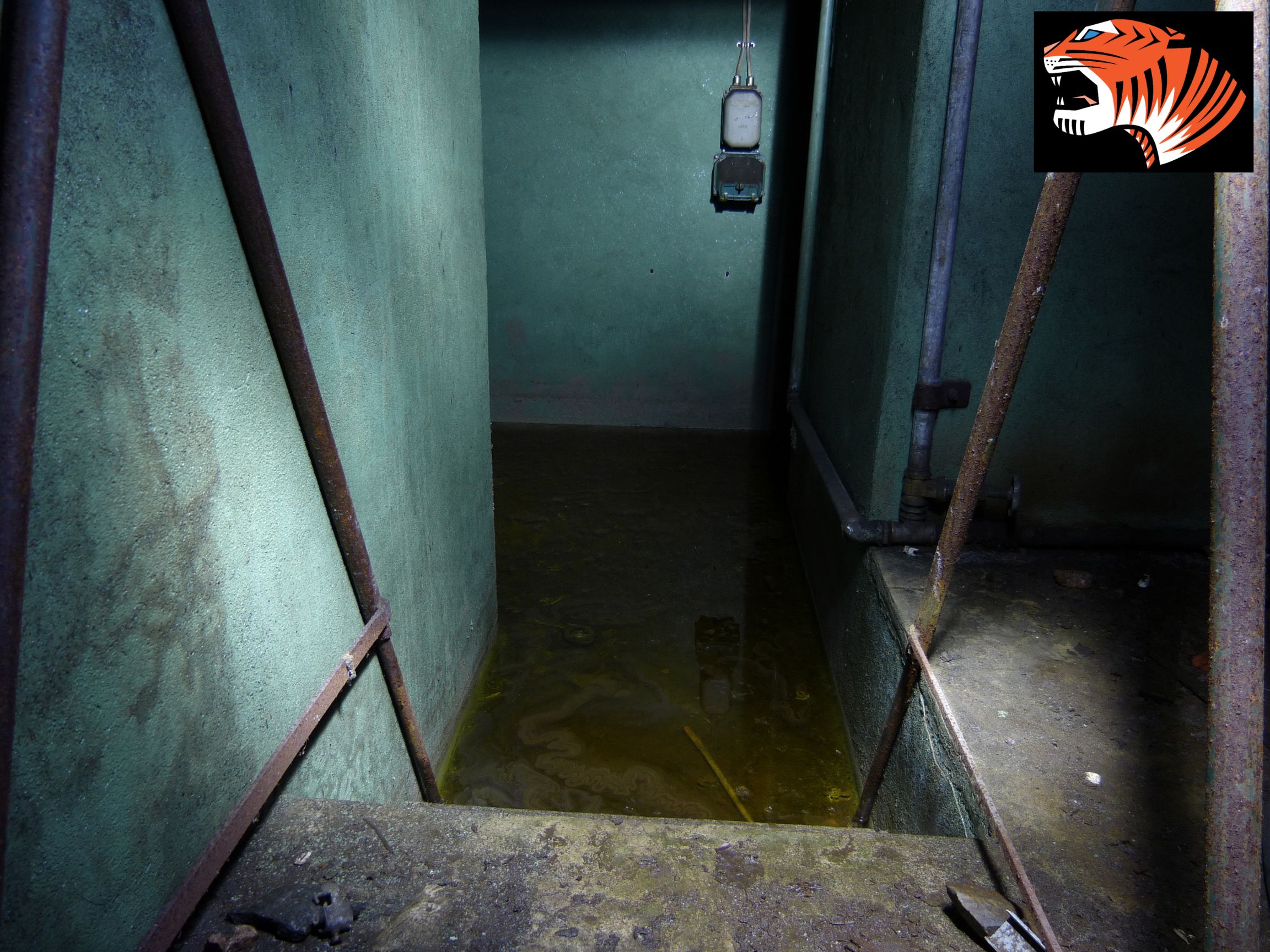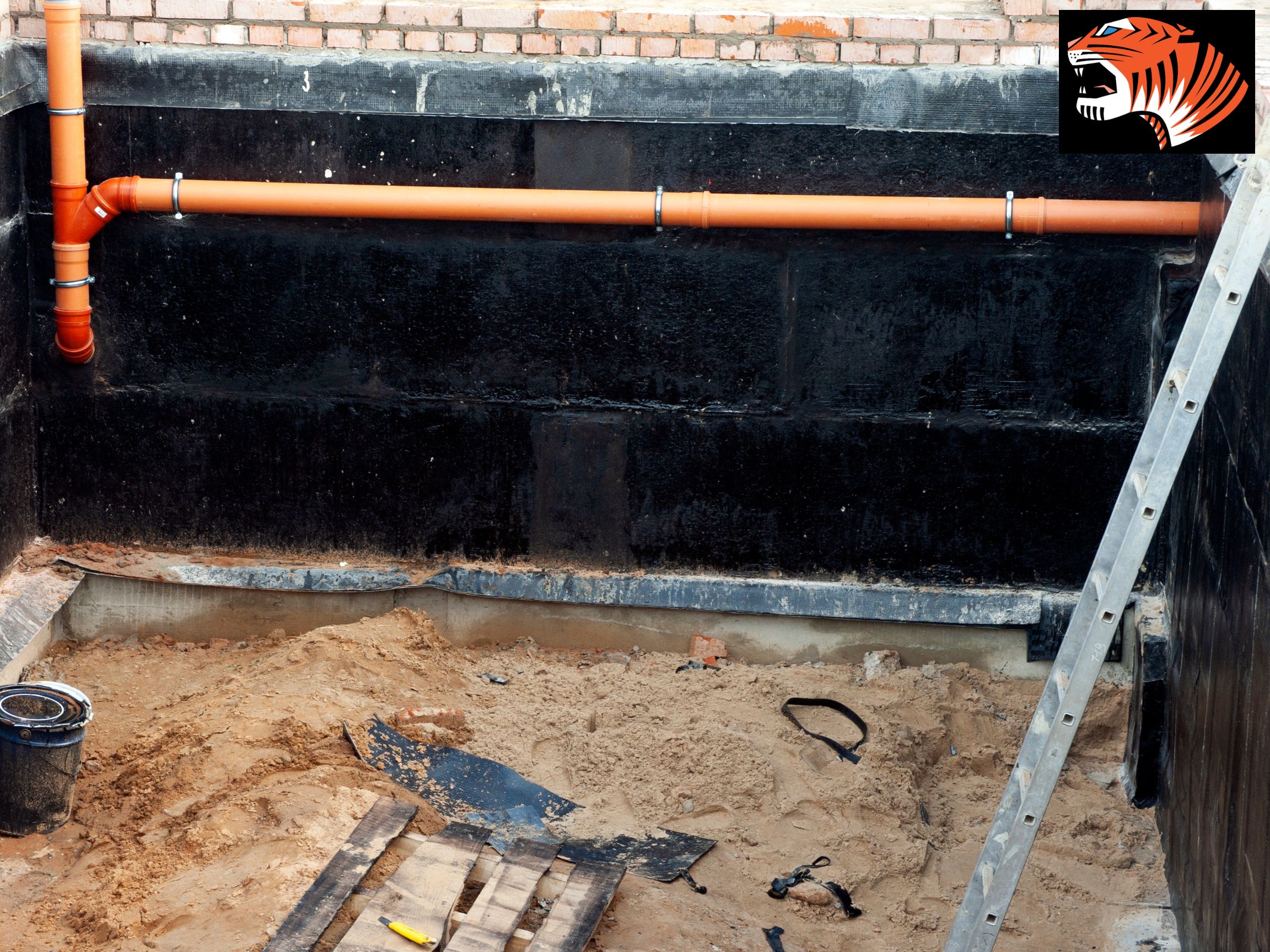
Are you tired of dealing with damp, musty basements and the constant worry of water damage?
Imagine having a basement that stays dry and secure, no matter the weather.
In this guide, you will uncover practical solutions that not only address current waterproofing issues but also provide long-lasting protection for your basement.
From understanding the common causes of water infiltration to exploring different waterproofing systems and cost-effective strategies, this detailed guide, brought to you by Tiger C Construction, will equip you with the knowledge needed to safeguard your basement against water damage effectively.
Key Takeaways
- Proper basement waterproofing prevents water damage, mold growth, and structural issues.
- Exterior and interior waterproofing systems work together for effective protection.
- DIY tips like sealing cracks, maintaining gutters, and improving grading help prevent water infiltration.
- Hiring a professional waterproofing contractor ensures quality, saves time, and maintains a healthy basement.
Importance of Basement Waterproofing
Basement waterproofing is essential for maintaining the structural integrity of your home and preventing costly water damage. By investing in proper basement waterproofing Chester VA, you can reap a multitude of benefits. One of the primary advantages is the prevention of water seepage and flooding, which can lead to mold growth, rotting wood, and damage to your belongings stored in the basement. Additionally, waterproofing helps maintain a stable indoor environment by reducing humidity levels and preventing musty odors.
To achieve effective basement waterproofing, various important techniques can be employed. These include making sure proper grading around the foundation to direct water away from the basement walls, installing a sump pump to remove any excess water, and sealing any cracks or gaps in the foundation where water could seep through. It’s also critical to inspect and maintain your gutters and downspouts regularly to prevent water from pooling near the foundation.
Moreover, basement waterproofing adds value to your home by protecting it from water-related damages, thus increasing its longevity. It provides peace of mind, knowing that your basement is a dry and safe space for storage or additional living areas. Ultimately, investing in basement waterproofing is a proactive measure that can save you from expensive repairs and ensure a healthy living environment for you and your family.
Common Causes of Basement Water Damage
Identifying the common causes of basement water damage is crucial for safeguarding your home’s foundation and preventing potential structural issues. One of the most common causes is poor drainage around the perimeter of your home, a concern that Chester VA waterproofing specialists often address. When water accumulates near the foundation, it can seep into the basement through cracks or weak points, leading to water damage.
Another frequent culprit is cracks in the basement walls or floors. These cracks can form due to the natural settling of the house or more severe issues like hydrostatic pressure from groundwater.
Additionally, issues with your home’s gutters and downspouts can contribute to basement water damage. If these systems are clogged or not directing water away from the foundation properly, water can pool around the basement walls, increasing the risk of leaks.
Another common cause is improper grading around the house. If the ground slopes towards the foundation, water can flow towards the basement, causing water infiltration.
To prevent these common causes of basement water damage, make sure that your home has proper drainage systems in place. Regularly inspect and maintain your gutters and downspouts to prevent clogs and make sure they’re directing water away from the foundation. Repair any cracks in the basement walls promptly and consider waterproofing solutions to add an extra layer of protection. Finally, make sure the grading around your home slopes away from the foundation to prevent water from seeping into the basement.
Types of Basement Waterproofing Systems
When it comes to basement waterproofing systems, two primary types are commonly used: exterior waterproofing methods and interior drainage systems.
Exterior waterproofing involves techniques applied outside the basement walls to prevent water from entering, while interior drainage systems work to manage water that has already seeped in.
Understanding the differences and benefits of these two systems is important in deciding the most effective waterproofing solution for your basement.
Exterior Waterproofing Methods
Implementing effective exterior waterproofing methods is important for safeguarding your basement against water infiltration and potential damage.
One key method is exterior grading, which involves ensuring that the ground surrounding your foundation slopes away from the house. This helps to prevent water from pooling around the foundation and seeping into the basement.
Another crucial technique is foundation repair, addressing any cracks, gaps, or weaknesses in the foundation that could allow water to enter. By proactively maintaining the exterior of your home, you can greatly reduce the risk of water damage to your basement.
These methods work together to create a strong defense against water intrusion, providing long-lasting protection for your basement and belongings.
Interior Drainage Systems
To further fortify your basement against water infiltration and potential damage, exploring interior drainage systems is crucial, specifically focusing on the various types of basement waterproofing systems available.
When considering interior drainage systems as part of your waterproofing solutions, here are three key options to contemplate:
- French Drains: These are trenches filled with gravel or rock that redirect water away from the foundation.
- Sump Pump Systems: Utilizing a sump pit and pump, these systems collect water and pump it out of the basement.
- Interior Waterproofing Membranes: These membranes are applied to the interior walls to prevent water seepage into the basement.
Each of these solutions plays a crucial role in safeguarding your basement from moisture-related issues.

DIY Basement Waterproofing Tips
Consider utilizing effective basement waterproofing techniques to prevent water damage and maintain a dry environment in your home. When it comes to DIY waterproofing techniques, there are several simple yet important steps you can take to prevent basement moisture issues. Start by inspecting the exterior of your home for any cracks or gaps in the foundation where water could seep in. Seal these areas using a waterproof sealant to create a barrier against water intrusion.
Another important DIY waterproofing tip is to make sure your gutters and downspouts are clean and free of debris. Clogged gutters can cause water to overflow and seep into your basement, leading to potential water damage. Regularly cleaning your gutters and extending downspouts away from your home can help prevent this problem.
Additionally, improving the grading around your home can have a significant impact on basement moisture prevention. Make sure the ground slopes away from your foundation to direct water away from the basement walls. This simple step can help prevent water from pooling around your home and seeping into the basement.
Incorporating these DIY basement waterproofing tips into your routine maintenance can go a long way in protecting your home from water damage and maintaining a dry, healthy environment in your basement for years to come.
Hiring a Professional Waterproofing Contractor
When seeking professional assistance for basement waterproofing, make sure you choose a reputable contractor with experience in effectively addressing water intrusion issues. Hiring a professional waterproofing contractor can guarantee the job is done right the first time, saving you time, money, and potential headaches. Here are three key factors to take into account when hiring a professional:
- Contractor Qualifications: Look for contractors who are licensed, insured, and certified in waterproofing techniques. Check for memberships in professional associations and ask for references from past clients to gauge their reputation and quality of work. A qualified contractor will have the expertise to assess your specific needs and recommend the most suitable waterproofing solutions for your basement.
- Project Timelines: Discuss project timelines with potential contractors to make sure they can accommodate your schedule and complete the work within a reasonable timeframe. Delays in waterproofing projects can lead to further damage and inconvenience, so clarify expectations upfront regarding the start date, duration of work, and any factors that could affect the timeline.
- Cost Estimates and Contracts: Obtain detailed cost estimates from multiple contractors and compare them to understand what’s included in the pricing. Review contracts carefully, making sure all work to be done, materials to be used, project timelines, and payment schedules are clearly outlined. A transparent contract protects both you and the contractor, establishing clear expectations for the waterproofing project.
Maintenance and Long-Term Solutions
For effective maintenance and long-term solutions in basement waterproofing, regularly check and address any signs of water damage to prevent potential issues from escalating. Preventive maintenance is key to ensuring your basement remains dry and free from water damage. Start by inspecting the interior and exterior of your basement for any cracks, leaks, or dampness. Addressing these issues promptly can prevent them from turning into more significant problems.
To maintain a dry basement, consider sustainable solutions such as installing proper drainage systems, sealing cracks, and applying waterproof coatings. These measures can help prevent water infiltration and protect your basement from moisture-related issues. Additionally, make sure your gutters and downspouts are clear of debris and functioning correctly to direct water away from your foundation.
Regularly monitor the humidity levels in your basement and use a dehumidifier if needed to keep moisture levels in check. Proper ventilation is also essential in preventing condensation and mold growth. Consider using fans or opening windows to improve airflow.
Cost-Effective Waterproofing Strategies
When looking to waterproof your basement without breaking the bank, consider budget-friendly options such as sealants, coatings, and drainage solutions. Economical moisture prevention methods like improving grading around your home and fixing leaks promptly can also help keep water out effectively.
Cost-efficient sealing techniques, such as using waterproofing paints or applying waterproof membranes, can provide a protective barrier against moisture infiltration at a reasonable price.
Budget-Friendly Waterproofing Options
Consider implementing these five cost-effective waterproofing strategies to protect your basement from moisture and water damage.
- Interior Sealants: Apply affordable solutions like waterproof sealants on interior walls to prevent water seepage.
- Downspout Extensions: Extend downspouts away from the foundation to direct water flow using budget-friendly products that can be easily installed.
- Proper Grading: Guarantee the ground slopes away from the foundation using cost-effective methods to prevent water pooling near the basement walls.
These budget-friendly waterproofing options can help you safeguard your basement without breaking the bank. By incorporating these strategies, you can create a more resilient and moisture-resistant environment for your basement space.
Economical Moisture Prevention Methods
To further fortify your basement against moisture infiltration, explore additional cost-effective waterproofing strategies that can enhance your existing protection measures. Budget-friendly techniques for moisture prevention include:
- Ensuring proper grading around your home to direct water away from the foundation.
- Installing gutter extensions to prevent water from pooling near the basement walls.
- Using landscaping to improve drainage.
Economical waterproofing solutions include:
- Applying waterproof sealants to basement walls and floors.
- Using vapor barriers.
- Sealing foundation cracks.
These solutions offer substantial benefits in reducing the risk of water damage and mold growth in your basement while maintaining a secure and dry environment for your belongings.
Cost-Efficient Sealing Techniques
For a cost-efficient approach to waterproofing your basement, consider utilizing sealing techniques that provide effective protection against moisture infiltration. When looking for affordable solutions, keep in mind these budget-friendly options:
- Polyurethane Sealants: These sealants are easy to apply and create a durable barrier against water leaks.
- Waterproofing Paints: Waterproof paints offer a simple and cost-effective way to seal basement walls and floors.
- Epoxies and Sealant Sprays: These products provide a strong protective coating, helping to prevent water seepage and moisture buildup.
Recap
Basement waterproofing is essential to protect your home from costly water damage. By implementing the right waterproofing solutions, you can guarantee a dry and safe basement for years to come.
Whether you choose to DIY or hire a professional contractor, investing in waterproofing now will save you from dealing with major headaches down the line.
Don’t wait until it’s too late – take action to safeguard your basement today!
